The Table Mountain Sandstone that we examined yesterday is not pristine at Table Mountain National Park. It’s been fractured in many places, and those fractures have facilitated fluid flow through the rock. Some of these fluids have stained the rock with Liesegang banding. Other fractures have dilated sufficiently that they were able to host deposits of new minerals: veins.
Many of these features are visually striking, and I spent the majority of my “geology time” on the Hoerikwaggo Trail taking photographs of them.
Let’s take a look at a nice summary image to start with:
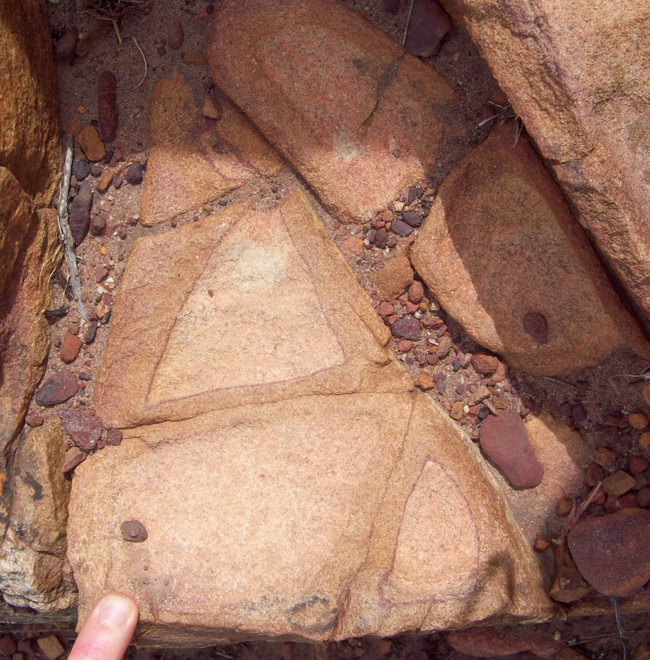
What we have here are a series of intersecting joints, and then fluids used those joints as “plumbing” to penetrate through the rock body. These fluids either brought iron into a rock with readily-available oxygen, or they were oxidizing fluids, ready to interact with iron already in the rock. Regardless, the fluids “soaked” into the surrounding sandstone by traveling (less efficiently) through its pore spaces, and left a stain marking the limit of in-soaking.
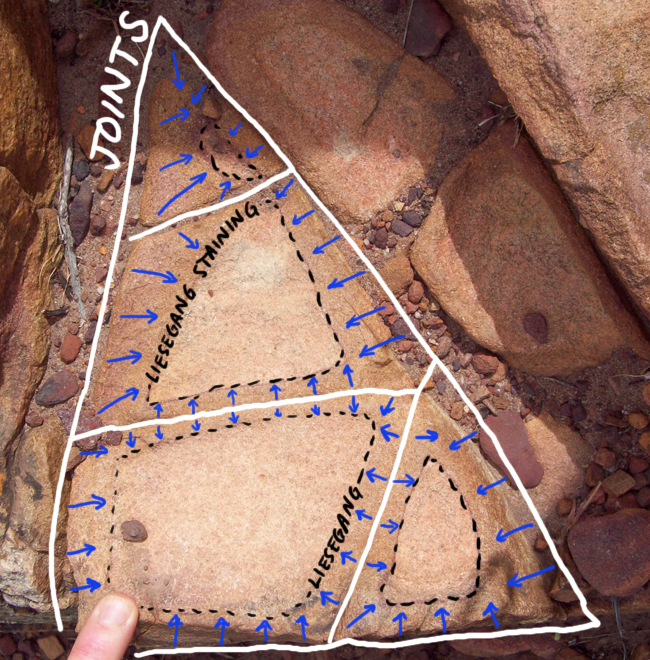
Iron-oxide staining of rocks like these goes by many names, but Liesegang banding is probably the best one.
Here’s another example, where you can get a sense of which fractures were utilized as preferred fluid-flow pathways, and which weren’t:
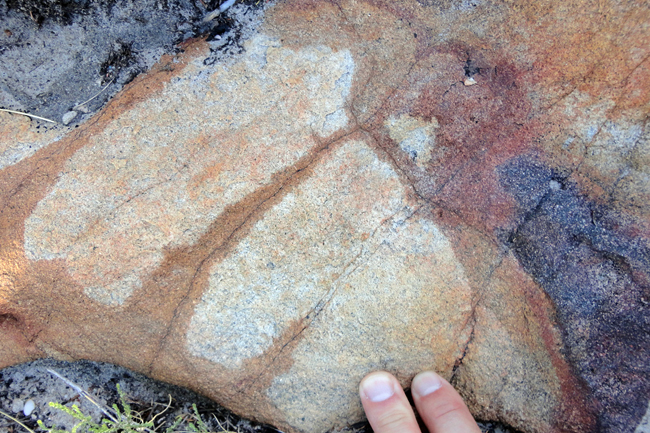
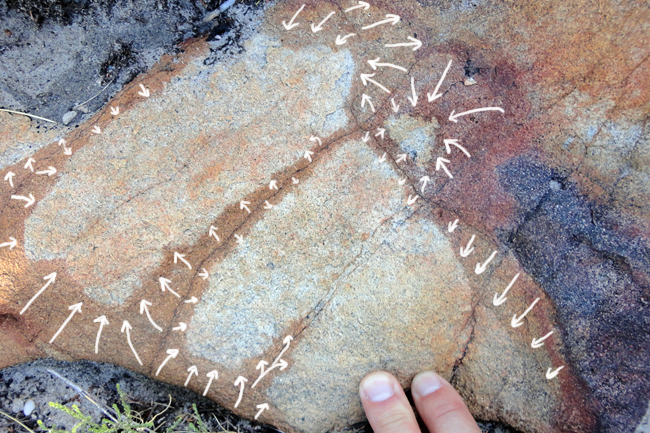
Here is an example of a joint set with no iron oxide staining to highlight it:
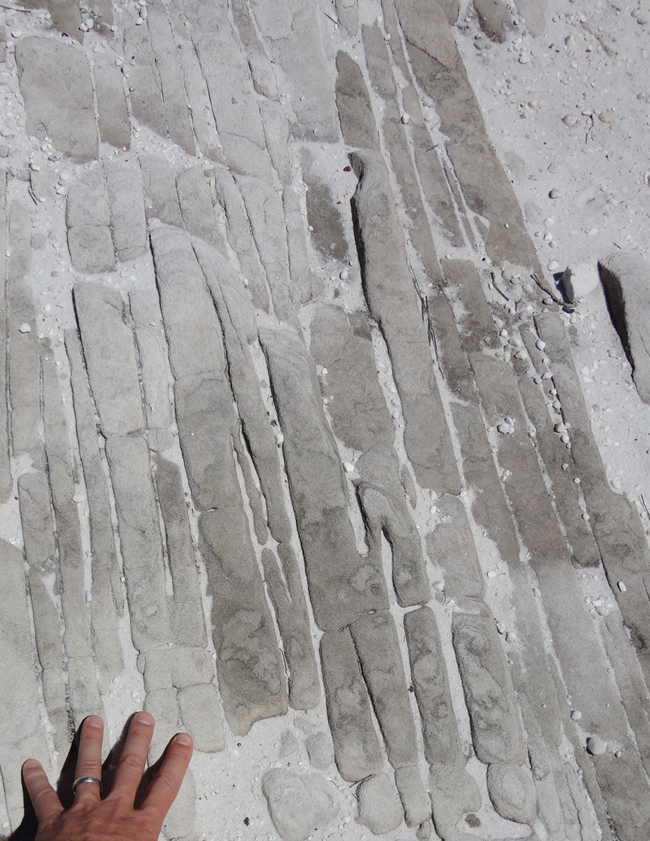
A few less evocative examples:
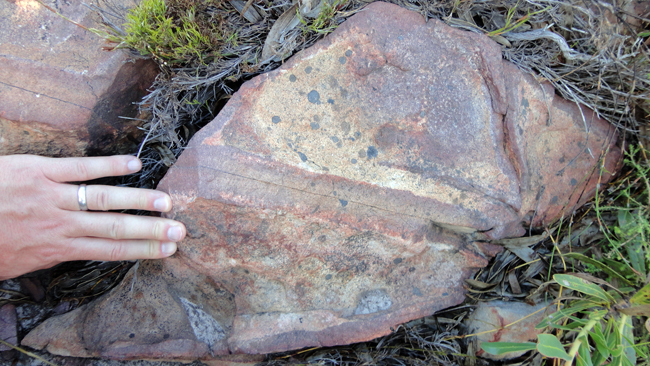
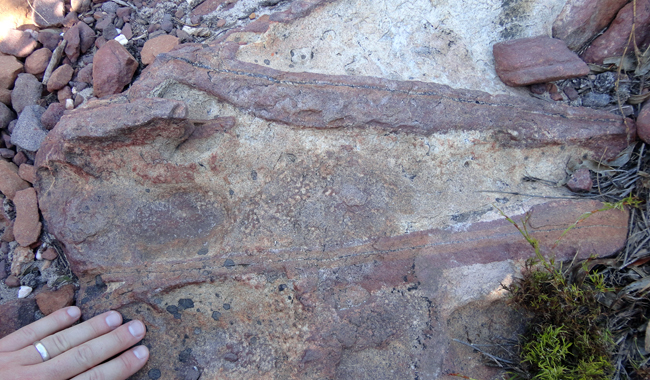
When these same joints persist as weak planes in the rock, it can break off to produce nice little blocks like this one, showing a “Liesegang rind” effect:
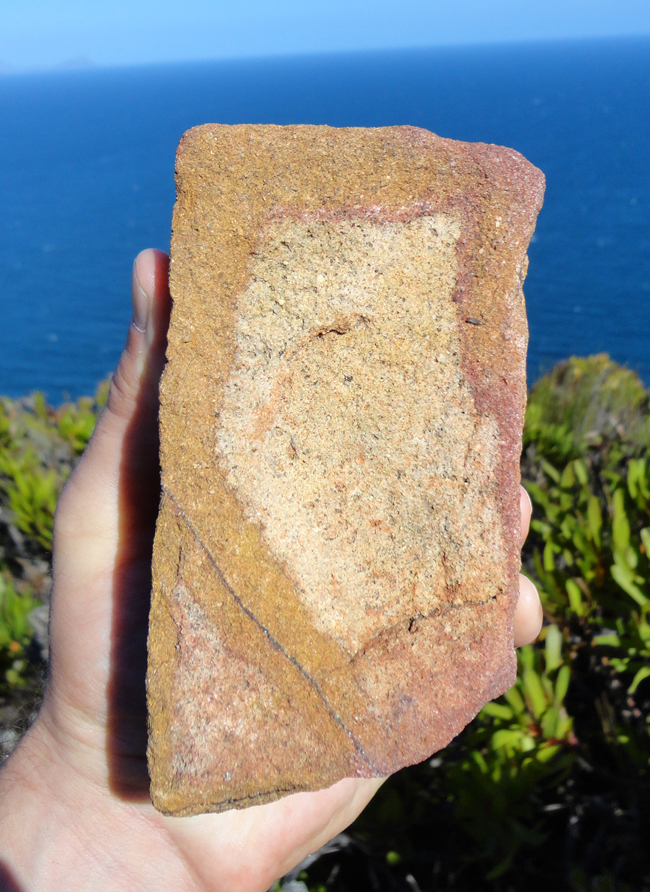
Nice color variation here:
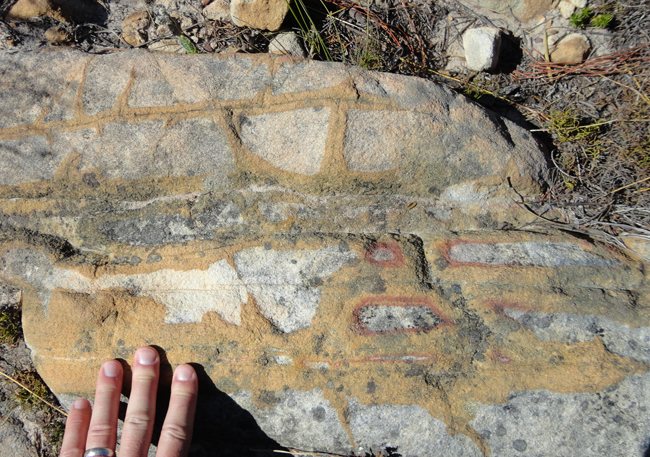
Here is an example that is more akin to true “textbook” Liesegang banding; with successive “soaking fronts” preserved and less joint control over the pattern:
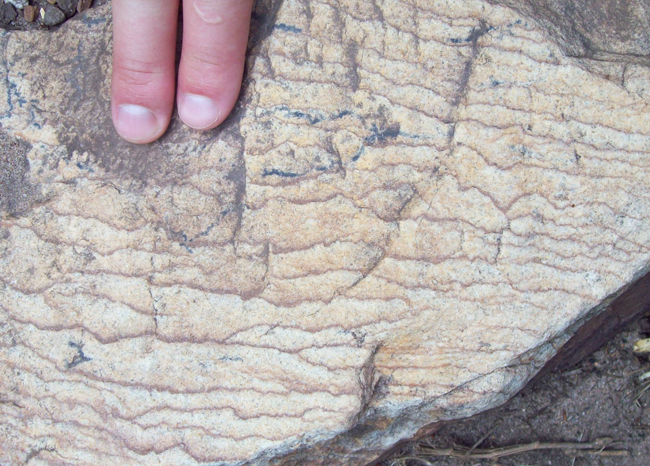
Odd; this one has the opposite coloring scheme of the others:
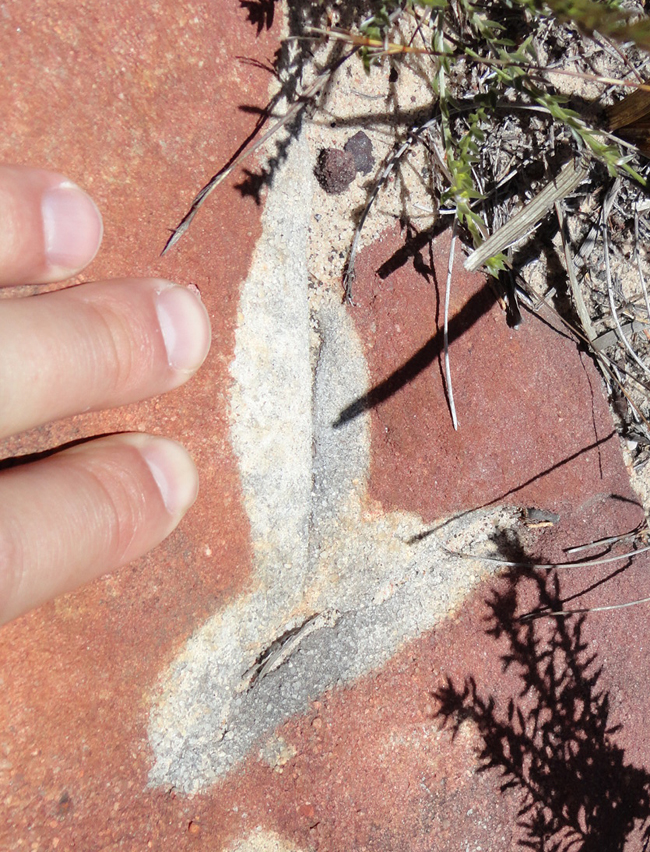
…Perhaps reducing fluids (rather than oxidizing ones) flowed through these joints?
One of my favorite examples – it’s got a great color palette and a great shape. Does it remind you of anything?
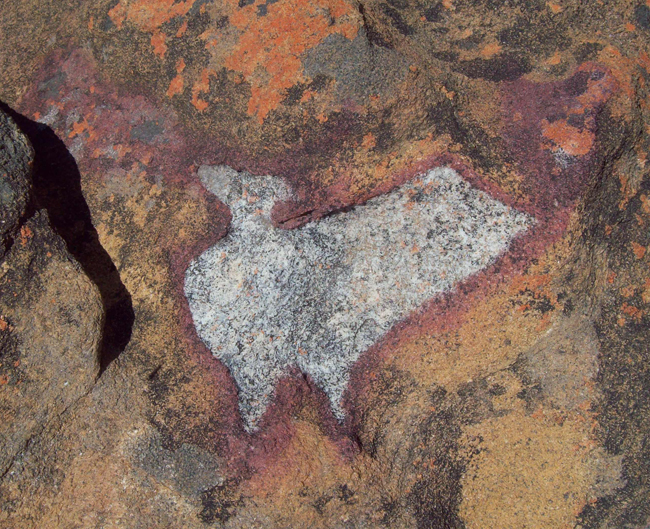
My own pareidolia kicked in to give me this:
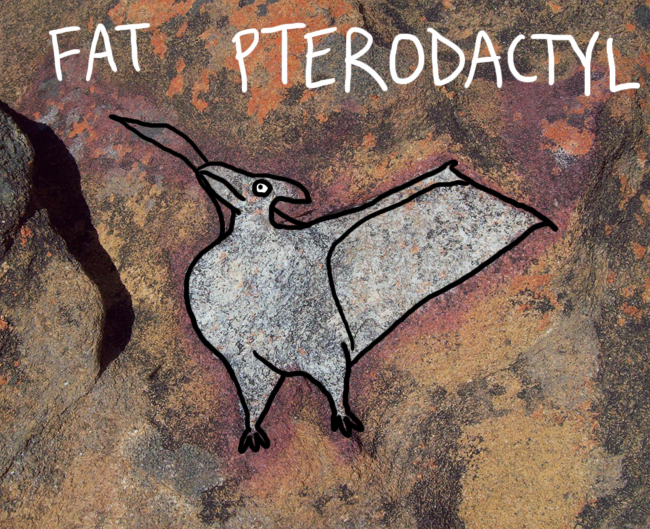
Notice in the next outcrop how the rusty edges of the joint-bounded sandstone blocks appear to stand up tougher to weathering than do the un-stained interiors:
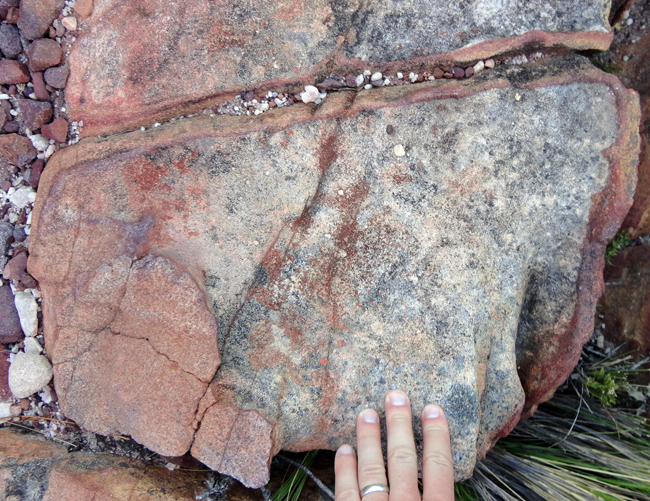
This phenomenon (differential weathering) can produce some neat boxy shapes among the weathered Table Mountain Sandstone outcrops:
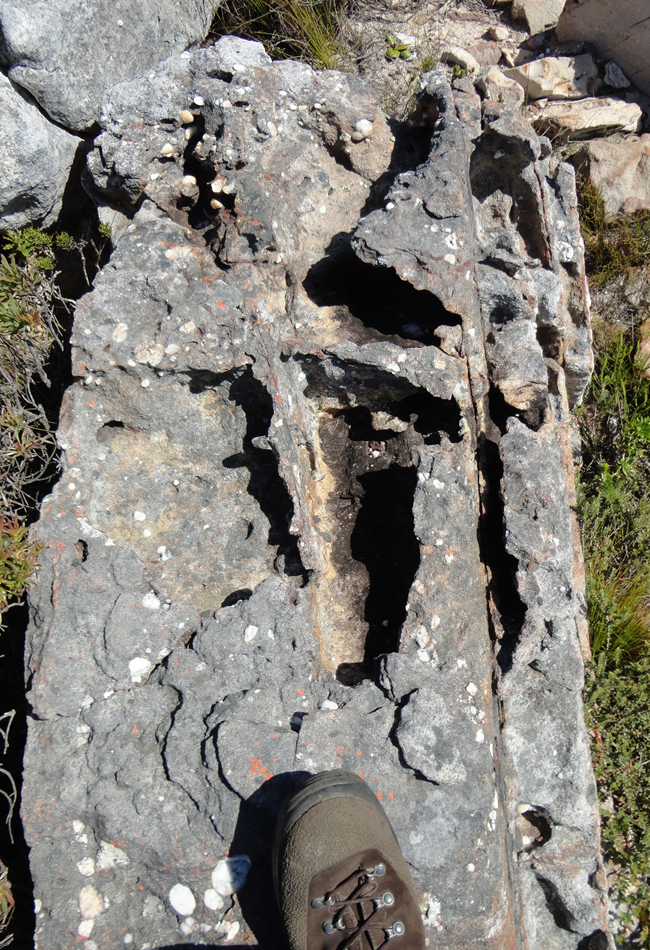
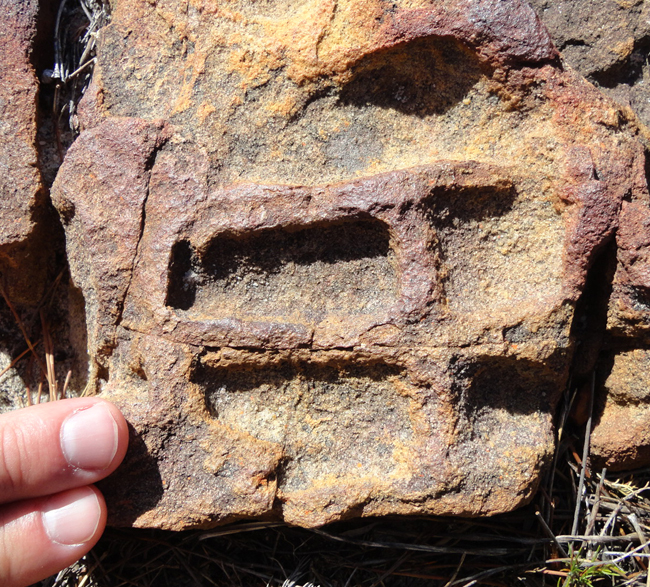
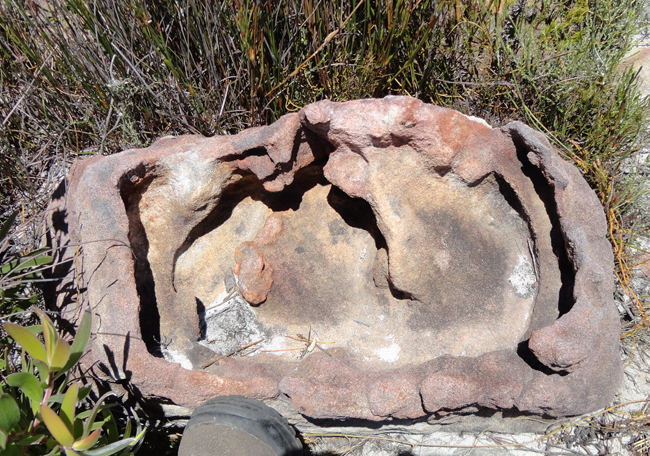
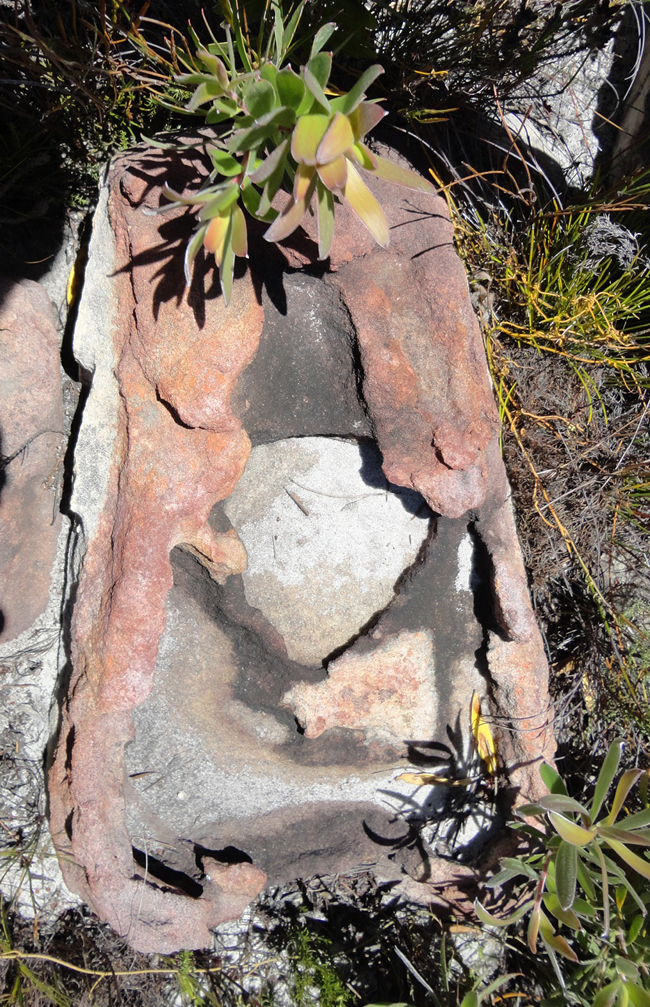
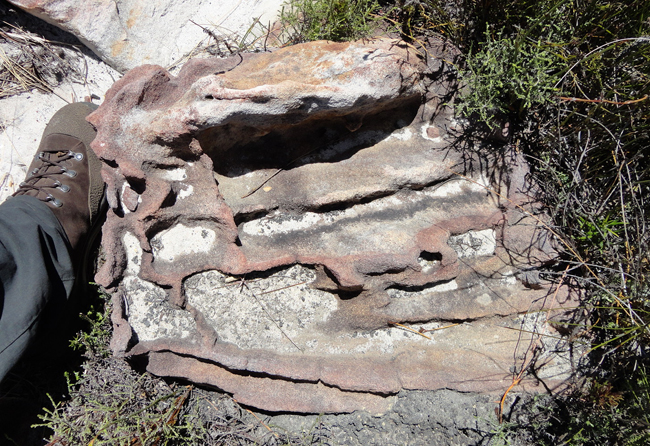
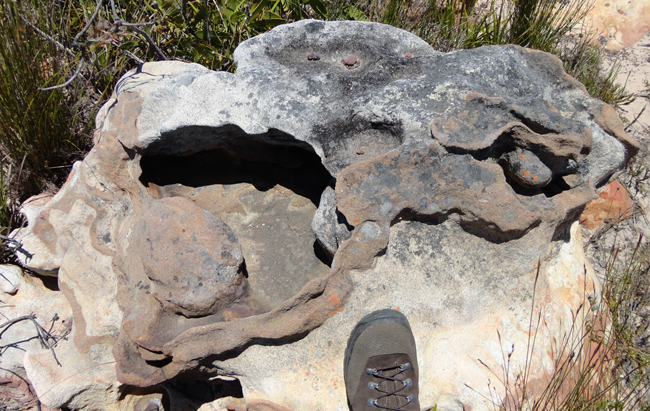
Here is an example with new material (dark color) added along the joint surfaces. These are veins:
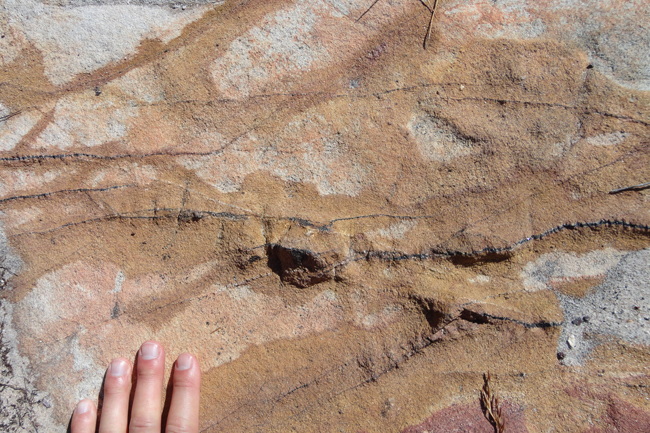
Closer in, you can see the vein-filling minerals:
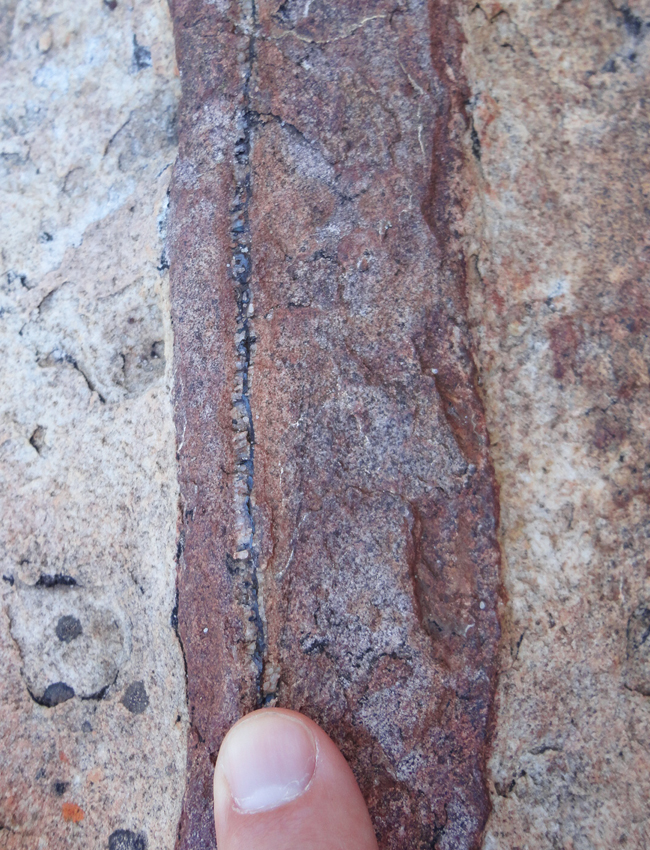
Near the Silvermine tented camp, we saw lots of these, and some of the veins were quite thick, with prominent euhedral quartz crystals and jet black to dark brown minerals, perhaps metal oxides? …Or, based on the name of the camp, silver ores?
Here, take a look: this is looking on the face of one of these veins:
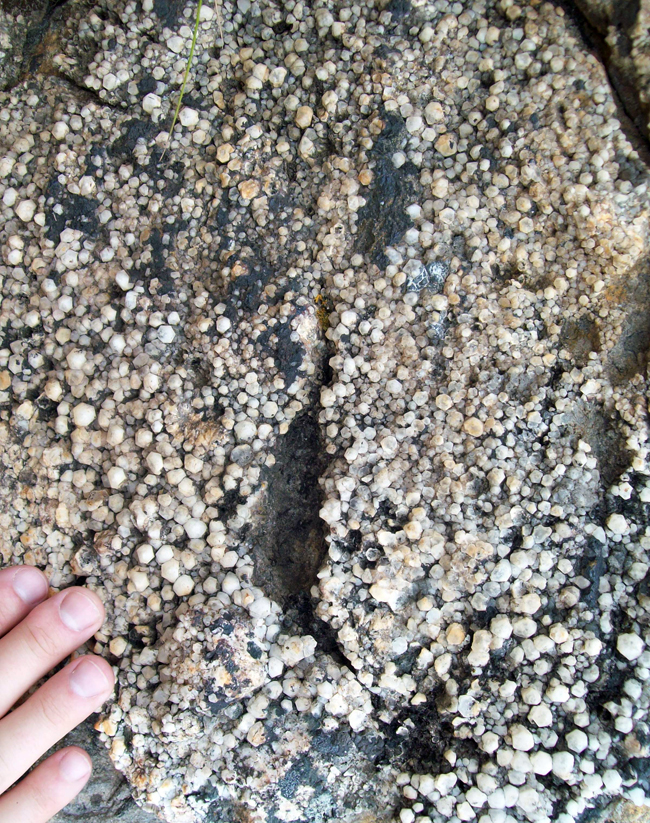
Closer in:
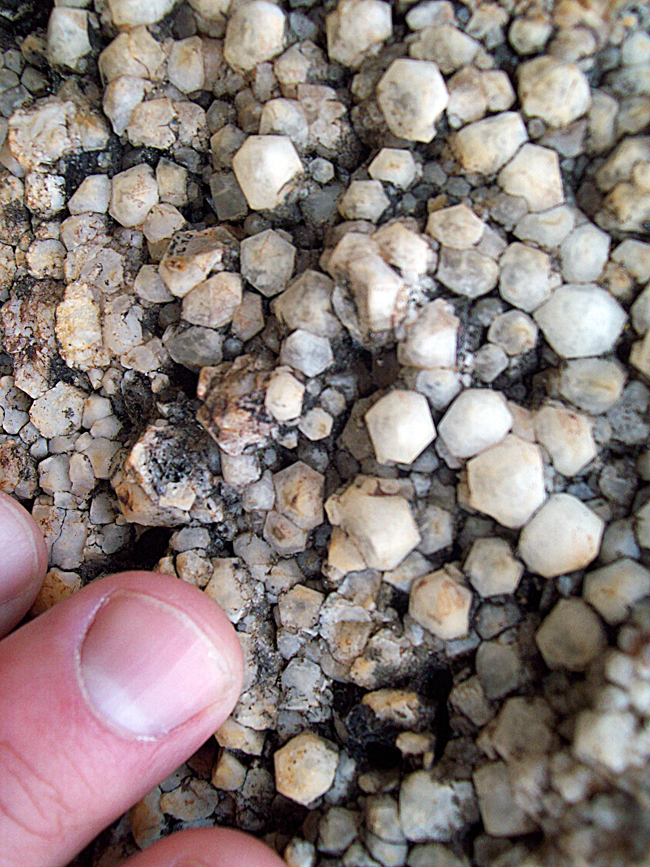
Now rotate 90°, for a cross-sectional view of the same kind of vein:
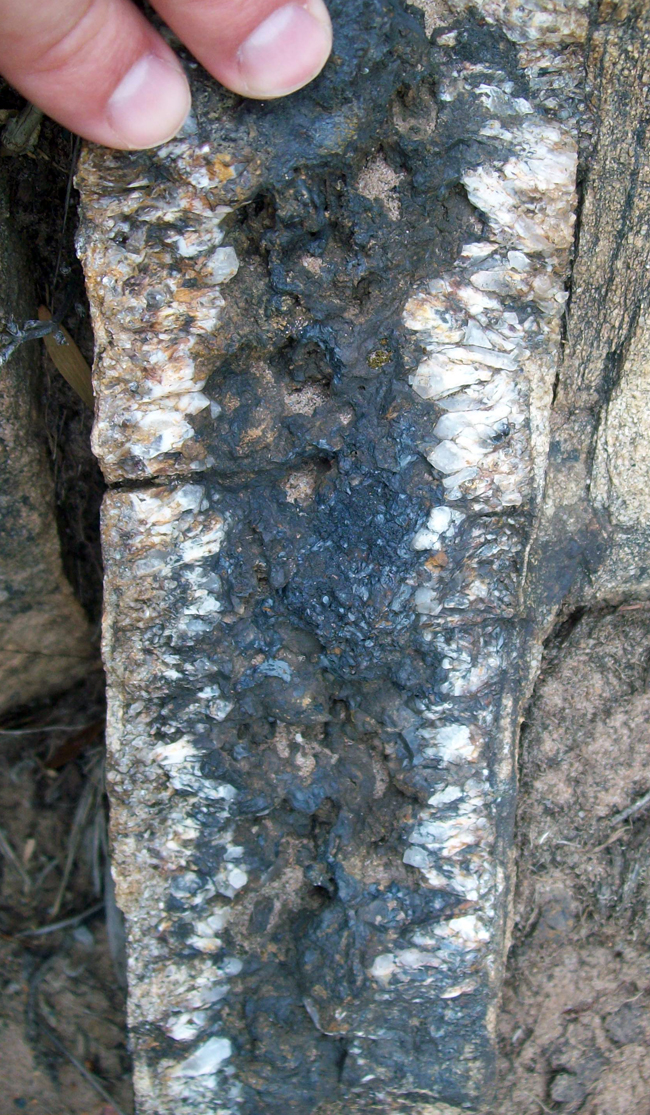
Closer in:
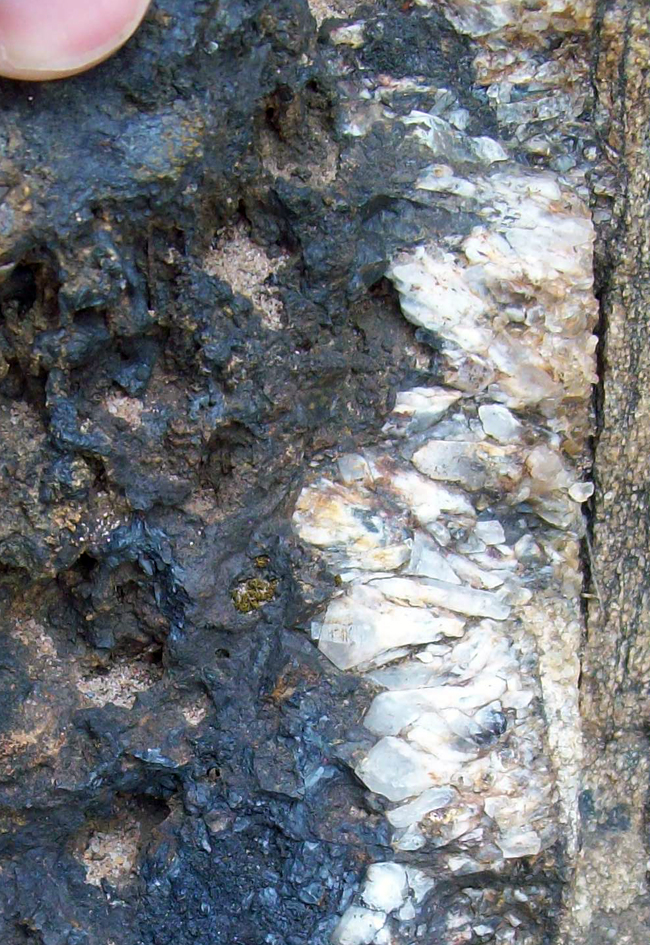
And next, I have a couple of messy pictures of these messy veins:
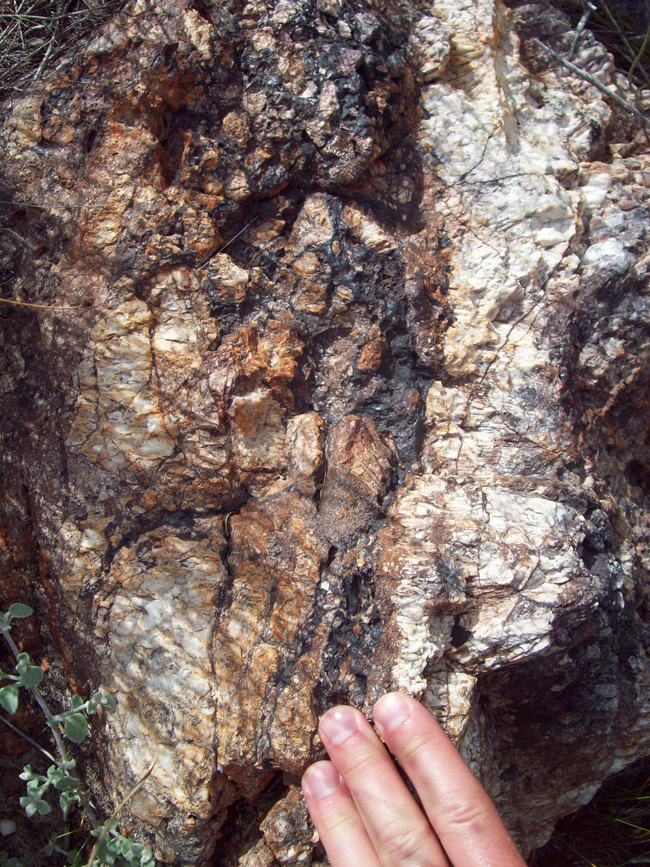
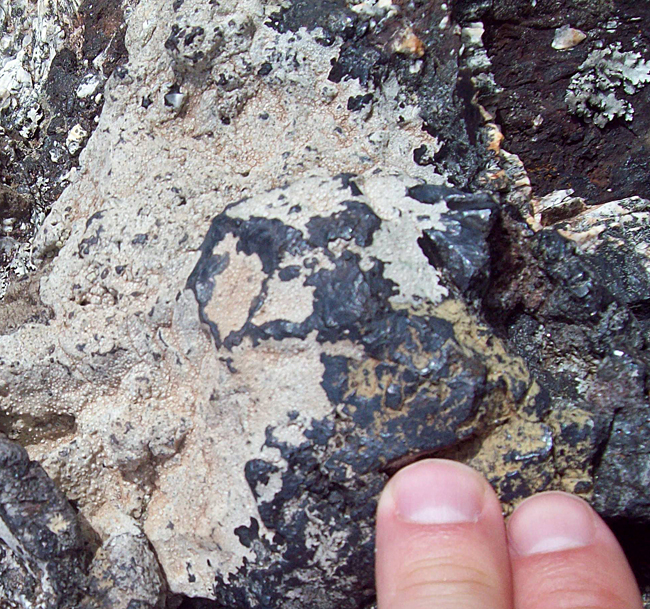
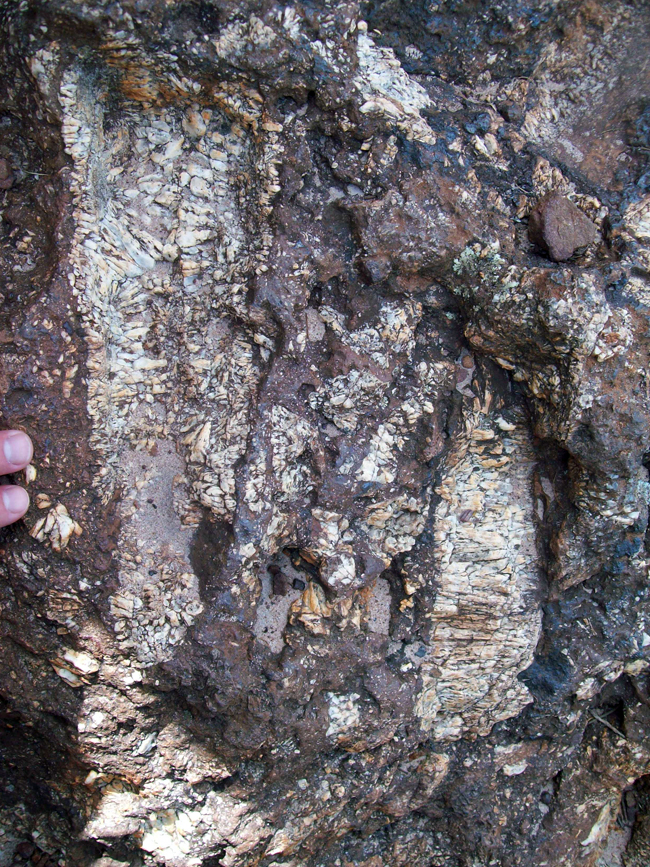
If anyone knows any more about the Silvermine area and wishes to share their expertise, please chime in via the comments.

The Fe and Mn cements and stainings are generally thought to date from the Cape Orogeny (permo-triassic) and are probably derived from the malmesbury shales below the Cape Basin. John Compton at UCT has had at least one student study the Mn oxides (I think the black minerals you saw are mostly that) which have been mined from faults in small quantities. As far as I know there was never a silver mine at Silvermine. Not to nit-pick but Liesegang banding is rhythmic banding caused by saturation fluxuations – so these cements, while certainly joint-guided, are not Liesegang banding.
Re: the pattern of staining, and what to properly call it: Yes, true, and I know better. Thanks. 🙂
I have a Rock that has similar staining as the top one. we found while getting rock from a quarry in Washington state. its markings are so intriguing we had people stop and ask where we got it.. if they could buy it. I was wondering if I sent pictures of it. is there anyway to know what it is made of? its very heavy like basalt? ANY help would be so very appreciated.
Sure- post some pictures, and I’ll take a look.
not sure how to post the pictures actually ….
Post them somewhere else and then post a link (URL) to that location here.
I have uploaded some of them to flickr.com my username is 2ERnursesSAVElives . Thank you.. again
Dana
http://www.flickr.com/photos/89502746@N00/
Yep, that looks like the same stuff. Iron oxide staining by groundwater flowing along joints (cracks) in the rock. I can’t tell from the photos whether it’s (weathered) basalt or not, but it’s pretty light colored, so basalt seems unlikely.
thank you! we were at a shale quarry off of highway 410 near a place called whistlin jacks lodge in clifdell washington….